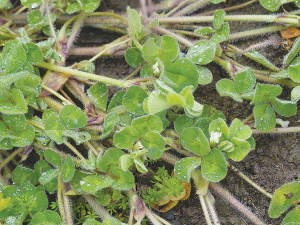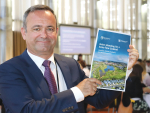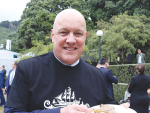Recent widespread autumn rain will have triggered the germination of subterranean clover seeds, and the resulting seedlings should be allowed to reach the 3–4 trifoliate leaf stage before grazing, says Beef+Lamb NZ.
With the correct management, these seedlings will provide ewes and lambs with high quality feed in late winter and early spring.
According to B+LNZ’s factsheet “Using Subterranean Clover”, farmers wanting to increase the population of subterranean (sub) clover in their swards should spell paddocks after germination has occurred to allow the seedlings to reach the 3–4 trifoliate leaf stage.
Ideally, the paddocks should then be grazed by cattle to reduce shading of the clover seedlings. This is particularly important in wet, ‘growthy’ autumns.
Over winter, the paddocks can be grazed as required, but B+LNZ recommend farmers keep the clover-rich pastures above 1200kg DM/ha. If possible, lambing paddocks should be spelled completely to allow pasture covers to build for lambing.
Sub clover is an annual legume which is valued for its ability to produce more drymatter than perennial legumes in early spring, making the most efficient use of available soil moisture. This means it is ideal for driving ewe lactation and pre-weaning growth rates.
Sub clover grows at least a month earlier than lucerne, white and Caucasian clovers. It favours sunny dryland sites, so it is particularly valuable in East Coast dryland hill country, where, with the appropriate management, it is able to persist in environments where white clover dies off.
Well managed dryland pastures can have 50% clover on offer in September and October.
Grasses in legumerich pasture benefit from the nitrogen(N) fixed the legumes as they take up the extra N and become more palatable to stock.
Subterranean clover has the ability to produce high-quality feed in late winter and early spring. As it thrives on drier sites (sunny hill faces, stony soils), with the correct management, subterranean clover can be a valuable component of east coast, dryland, sheep systems.
As an annual legume, sub clover produces more drymatter in early spring than perennial legumes such as white clover. This is because annuals germinate and grow at a lower optimum air temperature (10-15 °C) than perennial legumes (20–25 °C). Sub clover starts rapid growth at least a month earlier than lucerne, white and Caucasian clovers. Wellmanaged dryland pastures can get 50% clover on offer in September and October.
Grazing animals, when given the choice, prefer a diet that is 70% clover and 30% grass. Providing quality herbage from August to November helps lactating ewes milk well, ensuring rapid lamb growth rates. This allows lambs to be finished earlier, before summer dry conditions limit pasture production.



















